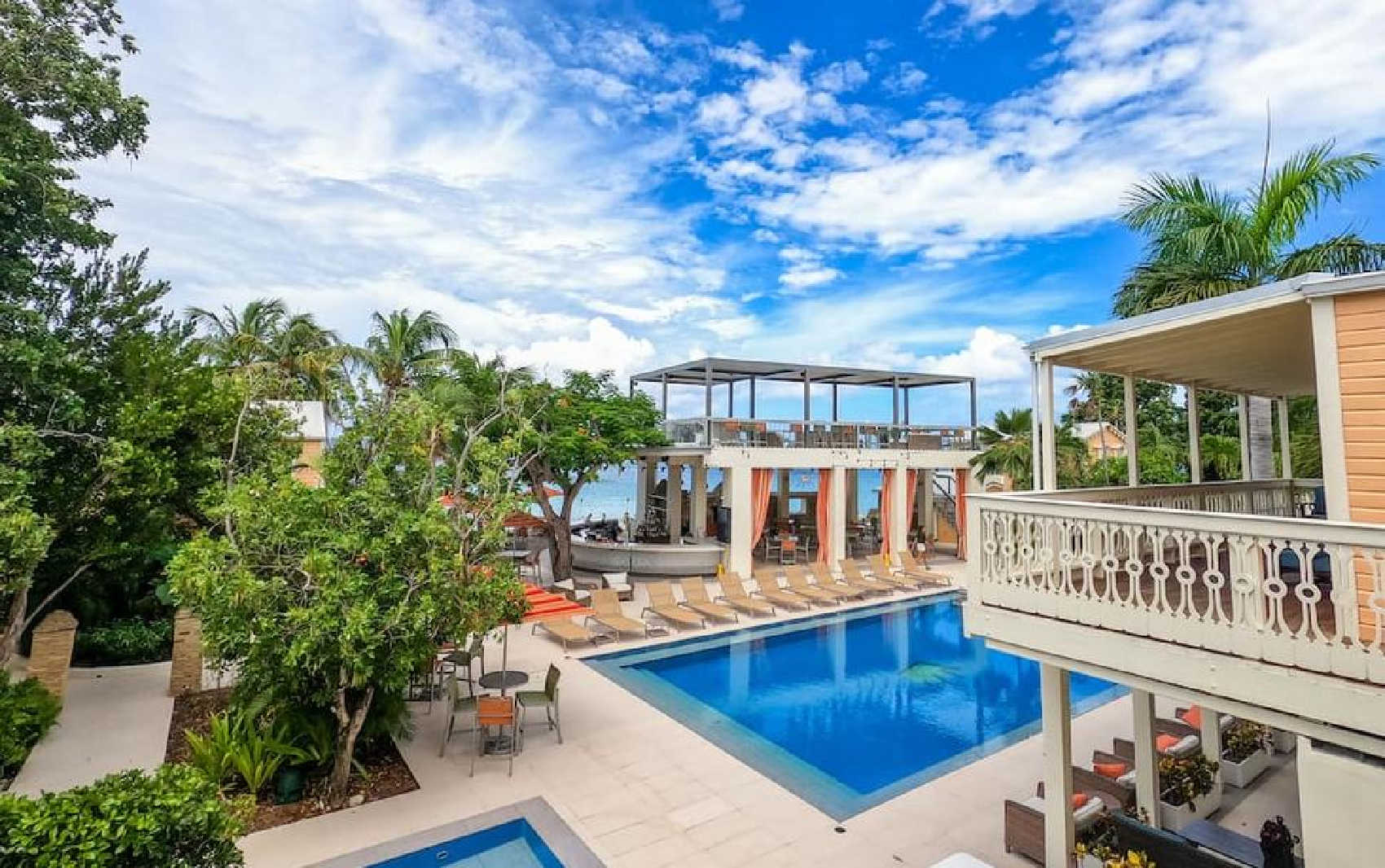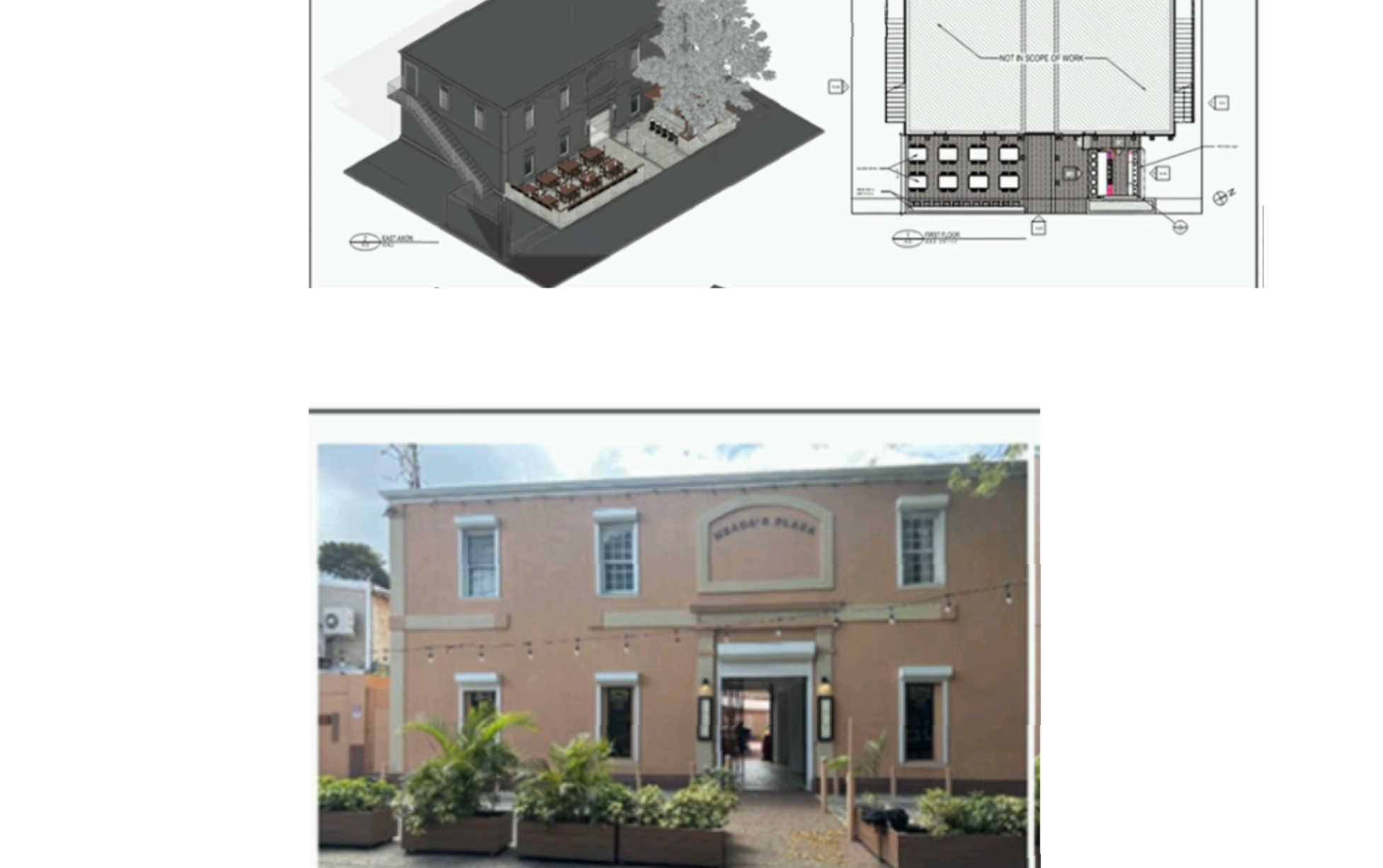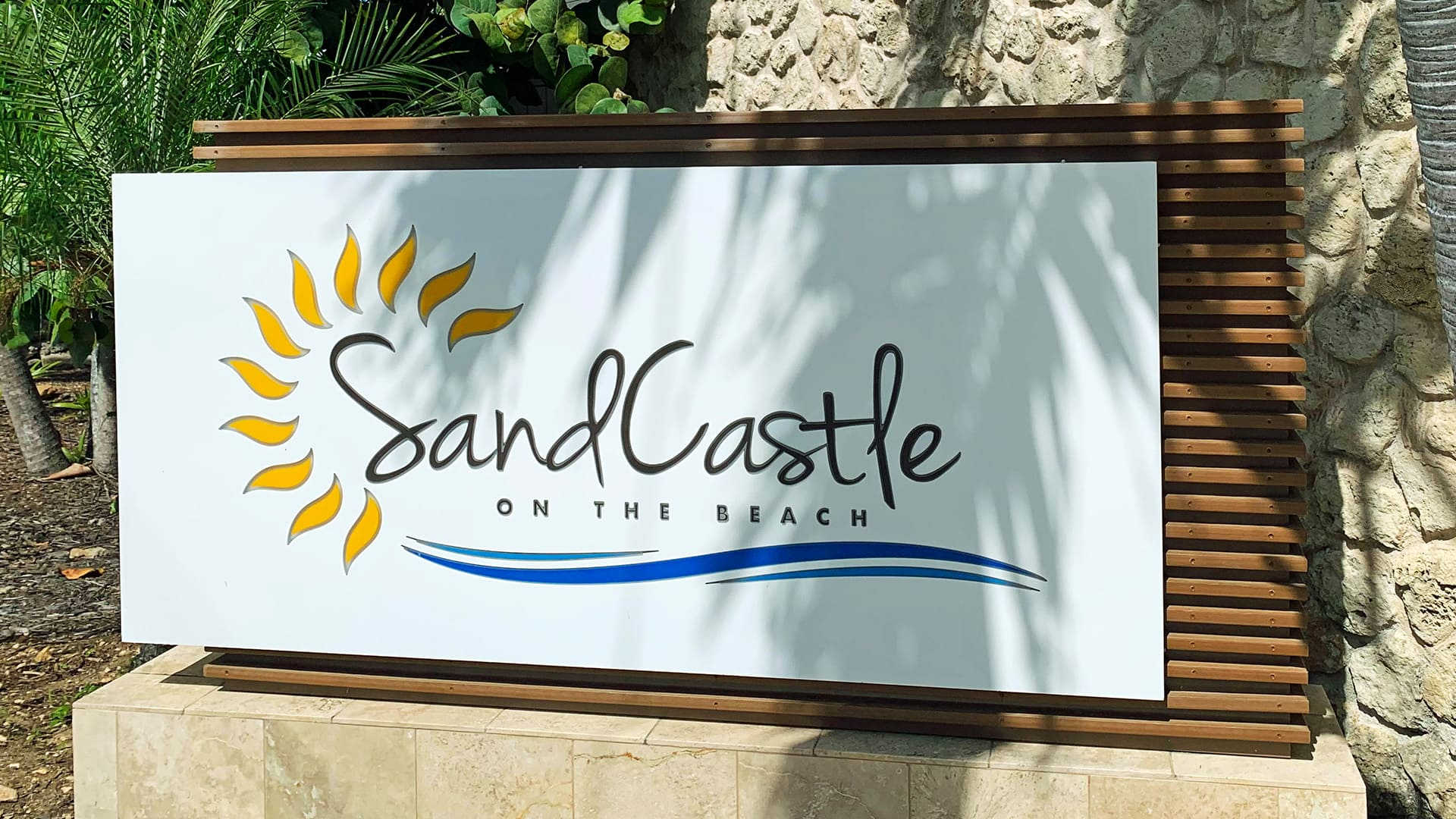Development
Expansion Plans Approved for The Fred Hotel in St. Croix

The expansion of The Fred Hotel in Frederiksted has received conditional approval from the St. Croix Historic Preservation Committee (HPC). The approval was granted during the committee’s monthly meeting in April, following a presentation by architect Clarence Browne.
Clarence Browne presented the hotel’s expansion plans to the HPC, outlining the construction of new structures and the refurbishment of an existing building to increase the hotel’s capacity. The proposal includes the addition of 24 guest rooms through the refurbishment of a building near the corner of Strand and Fisher Streets and the construction of a new structure on an adjacent vacant lot, adding another 10 rooms. The project aims to integrate these additions seamlessly with the existing architecture to maintain the area’s historical aesthetic.
During the meeting, HPC members and Mr. Browne discussed several critical aspects of the design, including how the new structures would integrate with the existing buildings without disrupting the streetscape. Special attention was given to the roofline connections and ground floor privacy, with innovative solutions such as replacing ground-level doors with windows equipped with door-sized shutters and masonry infill to preserve privacy and aesthetics.
Parking was a significant point of discussion, with HPC member Phil Codrington questioning the provision of additional parking spaces. Mr. Browne noted that the hotel’s owner was exploring options to secure additional parking spaces in Frederiksted to meet zoning requirements without compromising the waterfront property’s aesthetic value. Despite the challenges, Browne remained optimistic about finding a solution that would satisfy both parking requirements and community needs.
The HPC’s deliberations also touched on regulatory challenges, particularly zoning restrictions related to parking. Sean Krigger, director of the State Historical Preservation Office, pointed out that the HPC lacked the authority to waive these requirements. He suggested that incorporating parking within the new buildings could be a solution, a strategy that Mr. Browne agreed required creative thinking.
Ultimately, the HPC approved the expansion plans on the condition that the parking issue would be addressed in the final design. The committee expressed their appreciation for the efforts to enhance Frederiksted’s charm, with chair Collette Woodsoon Burgess commending the hotel’s contribution to the local beautification efforts. The approval marks a significant step forward for The Fred Hotel as it prepares to welcome more guests to the historic area of St. Croix.
Development
Debate on Sidewalk Bar Proposal Ignites at Historical Preservation Meeting

The St. Thomas-St. John Historical Preservation Society convened on a recent Tuesday to deliberate on several matters, including a contentious proposal for a new sidewalk bar at Meada’s Plaza in Cruz Bay. The plan, which calls for tearing down an existing concrete slab and erecting new structures with subtle lighting and movable seating, sparked a lively debate over aesthetics, public parking, and the complexities of navigating the permitting maze within historic districts.
Sean Krigger, the director of the State Historical Preservation Office, voiced his reservations about the design elements of the proposed bar, particularly the herringbone pattern intended for the perimeter wall. He suggested that the design might clash with the existing architectural style of Cruz Bay, which leans towards a more modern aesthetic. “The flooring might handle the design, but on a wall, it becomes too conspicuous,” Krigger explained. He proposed exploring the use of stone, which is prevalent in the district’s construction.
During the discussions, the perennial issue of parking resurfaced, mirroring concerns raised at a similar meeting of the St. Croix Historic Preservation Committee. Enrique Rodriguez, a committee member, pointed out that the proposed site for the sidewalk bar had been originally designated for parking. The local zoning laws currently do not allow the Historical Preservation Committee (HPC) to waive these parking requirements, a point Krigger emphasized. However, Kurt Marsh, another member, noted that the developers possessed a nearby parking lot that might serve as an alternative parking space, pending approval from planning authorities.
The committee also considered whether to approve the project conditionally, pending the acquisition of all necessary permits. Krigger strongly opposed this, stating, “We should not approve projects that do not fully comply with zoning and building laws.” This sentiment underscored the committee’s commitment to upholding legal standards rigorously, contrasting with the more flexible approaches sometimes observed on other islands.
Architect Clarence Brown expressed frustration with the convoluted permitting process, recounting instances of being shuffled between departments without clear guidance. “It’s baffling that every agency points to another, and yet we’re expected to have all approvals in place before moving forward,” Brown stated.
Ultimately, despite Krigger’s objections, Marsh proposed granting conditional approval, dependent on confirmation of the alternative parking arrangements and necessary adjustments to the design plans. The committee unanimously agreed, marking a significant step forward for the proposed project at 6B Vester Gade in Cruz Bay, St. John, despite the noted challenges and procedural hurdles.
Development
St. Croix Senators Rally Behind Major Developments: Hotel Expansion and New Pharmacy Set to Boost Economy

During a recent session of the Committee of the Whole, lawmakers in the U.S. Virgin Islands swiftly advanced two rezoning requests aimed at propelling economic growth on St. Croix.
The first initiative, encapsulated in Bill 35-0244, was brought forth by Roncan Inc, which operates under the name Sand Castle on the Beach. The company proposed to rezone various parcels in Estate Two Brothers, Smithfield, and Hesselberg, West End Quarter, from W-1 (waterfront pleasure) to R-3 (residential medium density). This change aims to align the hotel with the current infrastructure on its property and enable expansion over the next 2-5 years.
Leia LaPlace-Matthew, a Territorial Planner, highlighted the current zoning discrepancies, noting the plots’ non-compliance with W-1 zoning standards for lot area, width, and setbacks. The Department of Planning and Natural Resources supports the rezoning to a designation that better fits the existing conditions.
Chris Richardson, President of Roncan Inc, discussed the constraints imposed by the current W-1 zoning, which limits the effective use of space, detracting from the hotel’s aesthetic and functional layout. With plans to expand the hotel’s capacity to 78 rooms, Richardson emphasized the potential to add 30 new jobs, but noted that concrete expansion plans would only be announced post-rezoning approval.
Concerns about public beach access and environmental impacts were raised by Senators Kenneth Gittens and Diane Capehart, respectively. These issues were swiftly addressed by the developers to the satisfaction of the lawmakers.
The second bill, 35-0260, introduced by Dr. Hubert Watty, seeks to change the zoning of his property in Estate Clifton Hill, Kings Quarter, from R-2 (Residential-Low Density) to B-3 (Business Scattered). Dr. Watty, who operates a medical clinic on the site, plans to utilize the rezoning to lease existing office space and establish a new pharmacy, enhancing local access to pharmaceuticals, particularly in light of a recent pharmacy closure in the area.
The Committee of the Whole, while not voting on the bills, expressed strong support for the initiatives. Senators Marise James and Ray Fonseca endorsed the projects as prime examples of responsible development needed on the island.
These developments represent significant strides in bolstering the economic landscape of St. Croix, promising new jobs and improved services for the community.
Development
$27 Million Boost for High-Speed Internet in the US Virgin Islands

The US Virgin Islands are gearing up for a significant boost in high-speed Internet access as part of a national effort to ensure all Americans have affordable, reliable connectivity. This initiative falls under the Broadband Equity, Access, and Deployment (BEAD) program, which is a component of the broader Internet for All initiative.
The National Telecommunications and Information Administration (NTIA), an agency within the U.S. Department of Commerce, has earmarked over $27 million specifically for the US Virgin Islands. This funding is intended to enhance Internet connectivity by identifying residential and commercial areas that are currently without adequate service.
The first step in this ambitious project involves creating a comprehensive map to pinpoint which homes and businesses are underserved or completely unserved by current broadband infrastructure. This mapping will be accomplished through a collaborative process where designated “eligible challengers,” such as local governments, nonprofits, and Internet service providers, can submit data affirming or contesting the connectivity status of specific locations.
Once areas in need are accurately mapped, the allocated funds will be awarded through competitive grants. Internet service providers, community cooperatives, and similar entities will have the opportunity to apply for these grants to develop or enhance broadband networks, thereby expanding service to those previously underserved or unserved areas.
While individual residents and small business owners are not directly eligible to challenge or apply for the grants, they play a crucial role. The NTIA encourages them to collaborate with eligible organizations to ensure their connectivity needs are accurately represented in the final mapping.
Local authorities are poised to release more details on how and when stakeholders can submit their challenges and participate in this transformative project. This strategic investment not only promises to bridge the digital divide but also stimulates economic growth and enhances the quality of life for all residents of the US Virgin Islands.
-

 Education9 months ago
Education9 months agoCTE Board Enthusiastic About New Curriculum Standards, Yet Anxious Over Apprenticeship Support
-

 Development3 weeks ago
Development3 weeks agoCosts Surge as Donoe Estates Housing Project Resumes with New Contractor
-

 Crime9 months ago
Crime9 months agoRegistered Sex Offender Detained for Illegal Firearm Possession During Annual Surveillance Drive
-

 Crime7 months ago
Crime7 months agoSt. John’s Westin Resort Scene of Armed Robbery, Prompting Heightened Police Vigilance
-

 Crime9 months ago
Crime9 months agoUnraveling the Home Invasion in St. John: Suspect Held on $100,000 Bail
-

 Crime9 months ago
Crime9 months agoU.S. Virgin Islands Alert: Megan Smith Goes Missing; Authorities Request Community Aid
-

 Videos2 years ago
Videos2 years ago2022 Gubernatorial Election: Voters Speak Out
-

 Videos2 years ago
Videos2 years agoGubernatorial Teams Celebrate St. Croix’s Bull & Bread Day





